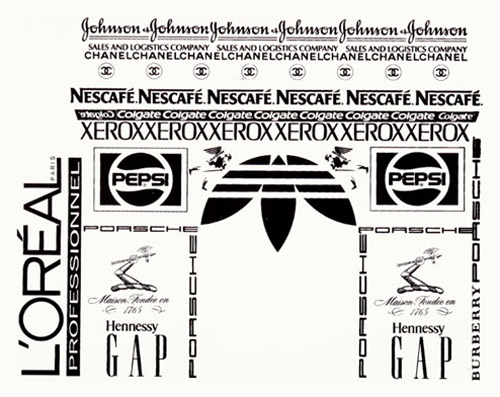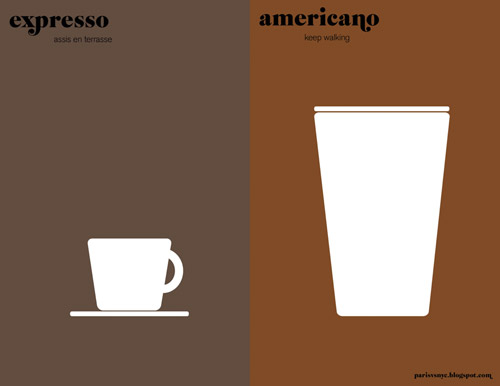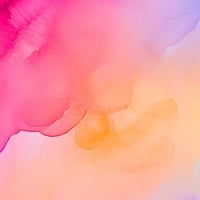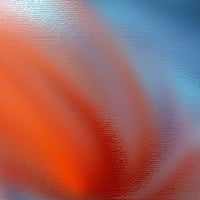kottke.org posts about Paris
Having recently published a book about Paris, France, Rosecrans Baldwin visited a number of towns named Paris around the US to see how Americans perceive the French here in 2012. Here’s part one of his report.
The survey has eight questions ranging from general opinions to particular trivia. For example, “Whose side was France on during the American Revolutionary War?”
Sixty-six percent of respondents get it right: our side. Twenty percent are wrong. Incorrect answers include “the British,” “England,” “the opposite side,” and, oddly, “the French.” Other responses: “History was not my class in school — I hate it,” and “I am averse.” My favorite comes from a gas station attendant in Lexington, Ky., who writes: “I refuse to answer the rest of this survey. I love the French language. I have had many French friends.”
One guy in a parking lot outside a Dallas strip club says, “This has got to be a trick question.” And there’s another person, at Phoenix Sky Harbor International Airport, who will ask me, “You mean our American Revolutionary War?” Which appears to be a general concern — of the 55 people, at least 10 ask me to which American Revolution I am referring. Two people say, “But we didn’t have a revolution.”
The Morning News is serializing the other parts of this story all this month but you can get the whole thing right now on the Kindle.
GQ has an excerpt of Rosecrans Baldwin’s new book about the eighteen months he and his wife spent in Paris.
Bruno sat under a machine shaped like a palm tree that sucked up smoke. He lit a cigarette, unpopped a shirt button nonchalantly, ordered Sancerre, and began talking over my head. After fifteen minutes, I understood that he’d worked on the infant-nutrition project for eleven months, ever since he’d joined the agency. They’d gone through four copywriters in the same amount of time; I was number five.
Bruno said, Reservoir Dogs, did I know this film?
“Bien sur,” I said, adding, “Mr. Pink?”
“Okay, good,” Bruno said in English. “Then, Mr. Pink… do not be this. Do not be saying in the office, ‘Fuck, fuck, fuck.’”
Evidently Bruno had overheard me swearing. He wanted me to know that cursing wasn’t cool in Parisian office culture. It seemed to weigh on Bruno, speaking English like that, correcting my behavior. As though envisioning trials to come.
The book is called Paris, I Love You But You’re Bringing Me Down and is due out soooon.
Logo Tourist is a project by Risto-Jussi Isopahkala that depicts cityscapes and famous Parisian landmarks made up of famous logos. Here’s the Arc de Triumph (sponsored by Pepsi and Adidas):

See also Logorama.
A.A. Gill has a hilarious and epic review of L’Ami Louis in Paris, which he dubs “the worst restaurant in the world”.
What you actually find when you arrive at L’Ami Louis is singularly unprepossessing. It’s a long, dark corridor with luggage racks stretching the length of the room. It gives you the feeling of being in a second-class railway carriage in the Balkans. It’s painted a shiny, distressed dung brown. The cramped tables are set with labially pink cloths, which give it a colonic appeal and the awkward sense that you might be a suppository. In the middle of the room is a stubby stove that also looks vaguely proctological.
The Paris vs New York blog presents a series of illustrated comparisons between the two cities: macaroons vs. cupcakes, baguette vs bagel, and espresso vs American coffee:

A masked bandit broke into the Paris Museum of Modern Art last night and stole 5 paintings. Included in the grab were a Picasso and a Matisse.
Here is the list of paintings and what they look like:
”Le pigeon aux petits-pois” (The Pigeon with the Peas) by Pablo Picasso
”La Pastorale” (Pastoral) by Henri Matisse
‘L’olivier pres de l’Estaque” (Olive Tree near Estaque) by Georges Braque
‘La femme a l’eventail” (Woman with a Fan) by Amedeo Modigliani
”Nature-mort aux chandeliers” (Still Life with Chandeliers) by Fernand Leger
(via @jkottke)
A 26-gigapixel image of Paris. Fully zoomable and pannable. Sacré-Coeur starts out as a tiny speck and you can zoom in to see a bunch of people sitting on the steps outside.
Images from Paris cafes and nightlife in 1962, the same week Yves St. Laurent’s runway show vaulted Dior to new heights. Many scenes around Les Halles (which no longer exists as it did then).
From the collection, a photo of some Les Halles butchers enjoying a drink at Au Pied de Cochon:

Update: As Wikipedia notes, Saint Laurent’s fabled show took place in 1958; Dior was gone from Dior by ‘62. Not sure whether the caption is wrong or the photos are really from 1958. (thx, alex)
Harry Beck, designer of the iconic London Tube map, once took a crack at a map for the Paris Metro, but his effort was rejected for being too geometric.
So why did the Paris Metro (now operated by the RATP) reject Beck’s clear simplification of their beloved system? One reason is visible at each station entrance; Parisians use the maps here as a free public service to help them find their way round the city - the ubiquitous geographic wall map is more than just a Metro plan.
The wonderful free bikes program started 18 months ago in Paris has run into some trouble.
Over half the original fleet of 15,000 specially made bicycles have disappeared, presumed stolen. They have been used 42 million times since their introduction but vandalism and theft are taking their toll. The company which runs the scheme, JCDecaux, says it can no longer afford to operate the city-wide network.
Reports have some of the stolen bikes showing up as far away as Eastern Europe and North Africa.
Update: But even with the thefts, the program is still making money for Paris & JCDecaux and enjoys a 94% satisfaction rate among Parisians.
Last July, the city of Paris agreed to pay JCDecaux 400 euros for every bike stolen in excess of four percent of the total fleet each year. Given the enormous popularity of Velib — users have taken 42 million rides since its debut — the cost of those payments is minimal. Using the BBC’s figure of 7,800 missing bikes, the pricetag for the city comes to less than 2 million euros annually, out of 20 million euros in user fees.
(thx, adam)
Update: Late correction…the Paris program is, of course, not free. (thx, afsheen)
Is Paris stagnant?
“Paris, and France, are definitely having an identity crisis,” says Christophe Boicos, a gallery owner and art professor for several American universities. “They have been living off their 19th- and 20th-century heritage for a long time. At the opening of the 21st century, they need to redefine themselves.”
Artists looking for the buzz go to London or Berlin, or further afield to New York, rather than Paris, says German art historian Wilfried Rogasch. “Paris is in stagnation. Talented people from around the world go to Paris. But they don’t go there for stimulation, they go to see Paris.”
I’ve said this before, but Paris — the central part of it anyway — seems like a giant museum. We’ve thought of living there for a year or two but after a recent one-day trip there, that doesn’t seem like such a good idea anymore. (via vqr)
André Zucca’s color photographs of Paris during the German occupation of WWII have provoked controversy because Zucca worked for a German propaganda magazine. But Richard Brody argues that Zucca’s photographs are true to the Paris of the time and don’t just show the “cheerful ease” of the city’s residents.
Certainly, Zucca couldn’t get the whole story: he photographed Jews wearing the star but couldn’t show the roundups or the deportation to Auschwitz; he could show German soldiers but couldn’t show the arrest, torture, and execution of resisters. He couldn’t, but nobody could; the problem wasn’t that he worked for a propaganda rag: photographers who actively worked for the Resistance couldn’t do it either. But what he did do was to capture the paradoxes of the Occupation, where horror and pleasure coexisted in shockingly close proximity, where the active resistance to Nazi occupation was in fact far less prevalent than the feigned daily oblivion of those who kept their heads down and tried to cope.
More of Zucca’s photos are here.
Always amusing, Rosecrans Baldwin’s dispatches from Paris. Unless (or perhaps especially) if you’re French.
One afternoon a roving band of 30 teenagers stopped traffic on the Champs-Elysées, marching toward the Arc de Triomphe, followed by a battalion of 60 police officers in riot gear, marching in rows of two. I asked a French co-worker what the kids were celebrating. He squinted, looking into the sun. “That it’s May,” he said. “That they’re French, that they’re young. You will not understand.”
Paris, I Love You But You’re Bringing Me Down is the latest is a series of dispatches from Rosecrans Baldwin during his Parisian residence.
“So who would win in a fight,” the Welshman asked me, “New York or Los Angeles?”
It took me a second. “Los Angeles. New Yorkers would be too busy to fight,” Then I asked him: “OK, imagine it’s you and a hundred five-year-olds in a locked room. The children are overcome with a desire to kill you. How many could you put down?”
He thought for a second. “Can I use one of them as a weapon against the others?”
“Sure. But you have to remember they’re a mob.”
“Yeah, I can’t let them get me on the ground.”
A minute later we gave the game over to the French: “Who wins, Coca-Cola or Uma Thurman?”
The French didn’t answer and remained staring out the windows-it might have been Battersea, or Shepherd’s Bush. Then the French director said, “That is not a game.” He started coughing. “It is so Anglo, this game. It is not a game. How do you judge this? It is a soda and a woman. Then how do you decide?”
“One wins, one loses. Just pick,” I said. But he refused: “It is nothing a French person would think is a game. It is so stupid.”
The traffic wasn’t moving. I asked him then to suggest a French game instead that we could play. “OK, OK, here is a French game,” he said. “We will talk about something for a little while. It will be about nothing. We will talk and talk and talk about it. Sometimes I will take the other side of the conversation, just to say you are wrong. And then we will stop.”
He resumed his brooding silence. The composer turned to say he agreed, this was a classic French game.
The just-released Michelin restaurant guide for Tokyo awards more stars to that city’s restaurants than New York and Paris put together. And 8 get a 3-star rating, only 2 fewer than in Paris.
Tokyo has more restaurants - at least 160,000 that could be classified as proper “restaurants” - than almost any other urban centre. Paris, by comparison, has little more than 20,000 and New York about 23,000.
There’s a lot of handwringing about Tokyo restaurants getting so many stars, but to look at it another way, Paris has 8 times fewer restaurants and has more 3 stars than Tokyo. Not bad.
(via marginal revolution)
On the SuperSpatial blog, Martin Gittins reviews a TV series on Venice, Italy, “the city destroyed by its own beauty”.
With the indigenous population dwindling to less than 50,000, and the oldest average age in Europe, da Mosto worries for the future of the city, as he brings his children up in what has become essentially a theme park for the hordes of visitors that cross the bridge link into the city, or pull up in the huge cruise ships that stop-over in Venice.
The danger for a city as a theatre or theme-park is that it becomes a stage set, a backdrop. This inevitably treats citizens as actors, there for others amusement. This leads to a simulated city as Baudrillard would have it, a city of the hyperreal as Umberto Eco might tell us. What happens when the audience is not there?
I’ve never visited Venice, but Paris shares some of the same traits. Obviously Paris is a large cosmopolity with much more than tourism going on, but the central tourist part of the city always feels a lot like a museum to me, moreso than other large cities I’ve visted. The city is simultaneously Paris — the capital of France, host to international corporations, home to an increasingly diverse 2.1 million people, cultural center — and also Ah, Paris™, an experience comprised of a certain style of architecture, cafes spilling out into tiny streets, romantic walks along the Seine, the French waiter, macaroons, the Notre Dame, les bouquinistes, baguettes, etc. That the two identities coexist in the same space and time, one within the other (Paris as cultural hypercube?), creates the potential for some real cognitive dissonance for the frequent tourist or long-term visitor attempting to straddle both worlds.
With its latest film, Pixar manages to achieve something that few other big Hollywood films do these days: a convincing reality. The body language & emotions of the characters, the machinations of the kitchen, the sights and sounds of Paris, and the dice of the celery, Ratatouille gets it all right, down to the seemingly insignificant details. As we walked out of the movie, my wife, who has spent time cooking in restaurants (with Daniel Boulud, even), couldn’t stop talking about how well the movie captured the workings of the kitchen. To be sure, a G-rated kitchen but a true kitchen nonetheless.
I’m not quite sure how this is possible, but the people in Ratatouille acted more like real people than the actors in many recent live action movies (especially the rats), like they had realistic histories and motivations that governed their actions instead of feeling scripted and fake. The world of the movie felt as though it had existed before the opening credits and would continue after the curtain fell. Systems that have arisen through years, decades, centuries, millennia of careful evolution and interplay with one another were represented accurately and with care. In The Timeless Way of Building, Christopher Alexander writes of the quality without a name:
There is a central quality which is the root criterion of life and spirit in a man, a town, a building, or a wilderness. This quality is objective and precise, but it cannot be named. The search which we make for this quality, in our own lives, is the central search of a person, and the crux of any individual person’s story. It is the search for those moments and situations when we are most alive.
Pixar’s search for this quality in the making of Ratatouille is impressive. And in a way, necessary. In order to draw the audience into the film and make them forget that they’re watching animated characters in an animated world, the filmmakers need to get everything right. Motions too exaggerated, motivations glossed over, plot too uncoordinated, and the whole thing loses its sense of authenticity. People need to act like people, omelettes need to sag off of spatulas like omelettes, and the only woman chef in a haute cuisine French kitchen needs to behave accordingly.
This is an interesting state of affairs. In comparison, the live action movies have become the cartoons. Not all of them, but certainly many Hollywood movies have. Spidey 3, Transformers (I’m guessing), Die Hard 4 (guessing again), anything Eddie Murphy has made since the mid-80s, Wild Hogs, Blades of Glory, RV, etc. etc. I could go on and on. So what are we to make of a cartoon that seems more real than most live action movies? How about we stop thinking of them as cartoons or kids movies or animated films and start considering them as just plain movies? I’d put Pixar’s five best films — Toy Story 2, The Incredibles, Finding Nemo, Ratatouille, and let’s throw Brad Bird’s The Iron Giant in for good measure — among the best big budget films made in the last 10 years, no caveats required.
Oh, and I don’t want to give away the ending, but I will say that Ratatouille also has something to say about critics and criticism, a topic that’s currently under debate in foodie circles and has been discussed many times in different areas of the blogosphere. It almost seems as though the film’s message is aimed partially at bloggers, and for those that care to listen, that message is both encouraging and enlightening.
Video of a Ferrari driving through the streets of Paris at up to 140 MPH, running stop lights, going the wrong way up one-way streets, and generally being insane.
How to make X-wing fighters (from Star Wars) out of Paris Metro tickets. I gotta try this…I’ve got about a zillion of these laying around because they make great bookmarks.
Ephermeral cities (SF, Paris, Berlin, NYC) provide alternative lifestyles to “nonfamilies and the nomadic rich”. “To retain an important role in the future, a city needs upwardly mobile people whose families and businesses identify them with a place. A great city is more about clean and workable neighborhoods, thriving business districts, and functioning schools than massive cultural buildings or hipster lofts.”
Coffee in Paris sucks?. I don’t drink coffee myself (vile, vile stuff), but I’ve never heard anything bad about the coffee in Paris, aside from the complaint of some Americans that you can rarely get it to go.
Newer posts
Older posts









Stay Connected